BMW X5 vs Mercedes V Class – Which model is better for everyday use?
Two cars, one duel: BMW X5 meets Mercedes V Class.
Which one wins in performance, efficiency and value for money? Find out now!
Costs and Efficiency:
Looking at overall running costs, both models reveal some interesting differences in everyday economy.
Mercedes V Class has a convincingly advantage in terms of price – it starts at 48200 £, while the BMW X5 costs 77100 £. That’s a price difference of around 28893 £.
Fuel consumption also shows a difference: BMW X5 manages with 0.80 L and is therefore clearly more efficient than the Mercedes V Class with 7.10 L. The difference is about 6.30 L per 100 km.
Engine and Performance:
Power, torque and acceleration are the classic benchmarks for car enthusiasts – and here, some clear differences start to show.
When it comes to engine power, the BMW X5 has a significantly edge – offering 625 HP compared to 237 HP. That’s roughly 388 HP more horsepower.
In acceleration from 0 to 100 km/h, the BMW X5 is significantly quicker – completing the sprint in 3.90 s, while the Mercedes V Class takes 7.40 s. That’s about 3.50 s faster.
In terms of top speed, the BMW X5 performs somewhat better – reaching 250 km/h, while the Mercedes V Class tops out at 220 km/h. The difference is around 30 km/h.
There’s also a difference in torque: BMW X5 pulls clearly perceptible stronger with 750 Nm compared to 500 Nm. That’s about 250 Nm difference.
Space and Everyday Use:
Cabin size, boot volume and payload all play a role in everyday practicality. Here, comfort and flexibility make the difference.
Seats: Mercedes V Class offers slightly more seating capacity – 6 vs 5.
In curb weight, Mercedes V Class is barely noticeable lighter – 2192 kg compared to 2240 kg. The difference is around 48 kg.
In terms of boot space, the Mercedes V Class offers convincingly more room – 1410 L compared to 650 L. That’s a difference of about 760 L.
In maximum load capacity, the Mercedes V Class performs decisively better – up to 5010 L, which is about 3140 L more than the BMW X5.
When it comes to payload, Mercedes V Class distinct takes the win – 908 kg compared to 705 kg. That’s a difference of about 203 kg.
Who wins the race?
The BMW X5 proves to be leaves the rival little chance and therefore becomes our DriveDuel Champion!
BMW X5 is the better all-rounder in this comparison.
 @ press.bmwgroup.com
@ press.bmwgroup.com
BMW X5
BMW X5
The BMW X5 embodies a perfect blend of luxury and performance, offering a driving experience that is both dynamic and comfortable. Its elegant design is complemented by a spacious, high-quality interior that prioritises driver and passenger comfort. Advanced technology features ensure that the X5 meets the demands of modern drivers, providing both entertainment and safety on the road.
details @ press.bmwgroup.com
@ press.bmwgroup.com
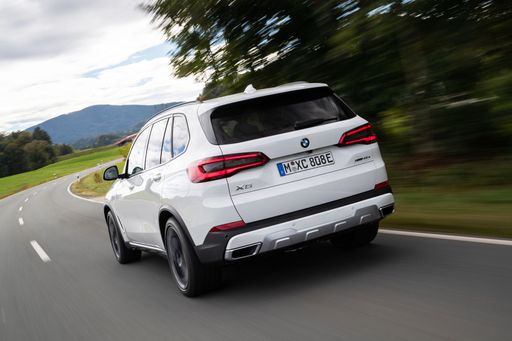 @ press.bmwgroup.com
@ press.bmwgroup.com
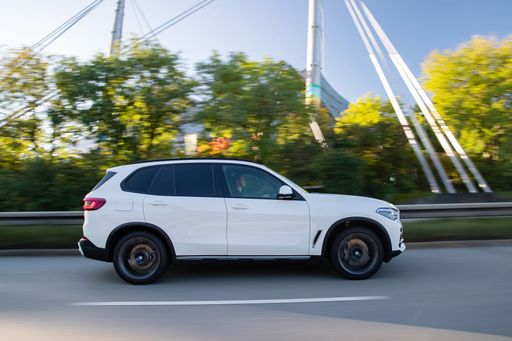 @ press.bmwgroup.com
@ press.bmwgroup.com
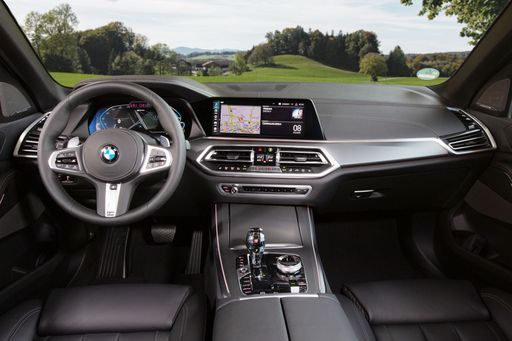 @ press.bmwgroup.com
@ press.bmwgroup.com
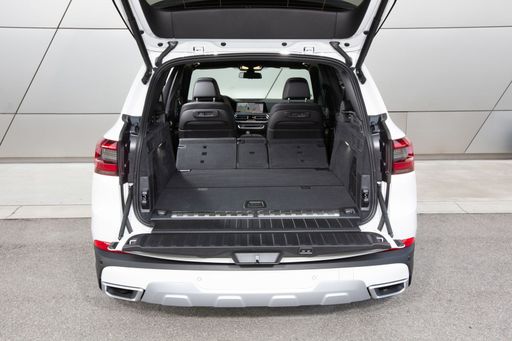 @ press.bmwgroup.com
@ press.bmwgroup.com
Mercedes V Class
The Mercedes-Benz V-Class exemplifies luxury and versatility in the world of multi-purpose vehicles. Its spacious interior is designed to accommodate both family adventures and executive travel with supreme comfort. With advanced technology and premium materials, the V-Class offers an unparalleled driving experience that seamlessly blends practicality with elegance.
details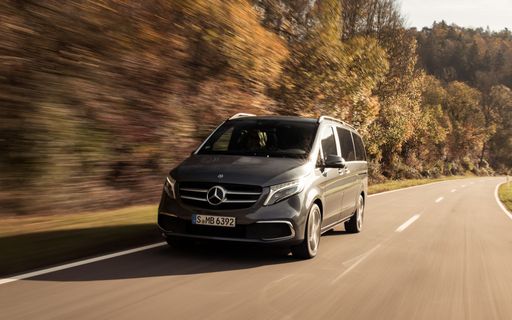 @ group-media.mercedes-benz.com
@ group-media.mercedes-benz.com
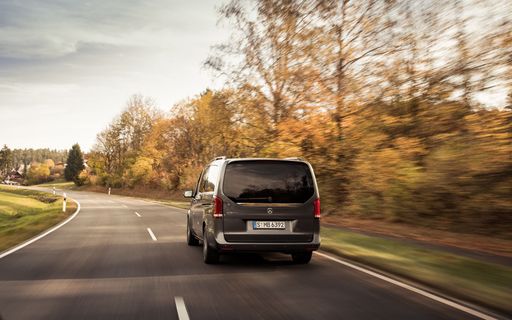 @ group-media.mercedes-benz.com
@ group-media.mercedes-benz.com
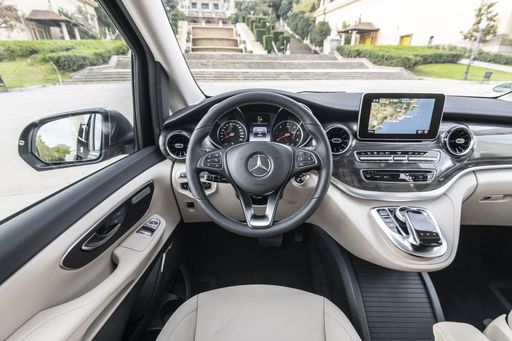 @ group-media.mercedes-benz.com
@ group-media.mercedes-benz.com
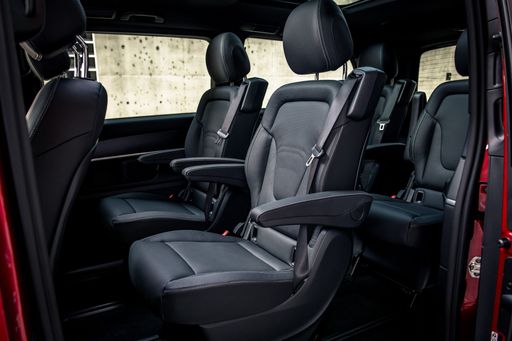 @ group-media.mercedes-benz.com
@ group-media.mercedes-benz.com
 @ press.bmwgroup.com
@ press.bmwgroup.com
|
 @ group-media.mercedes-benz.com
@ group-media.mercedes-benz.com
|
|
|
|
Costs and Consumption |
|
|---|---|
|
Price
77100 - 143500 £
|
Price
48200 - 83300 £
|
|
Consumption L/100km
0.8 - 12.8 L
|
Consumption L/100km
7.1 - 10.2 L
|
|
Consumption kWh/100km
-
|
Consumption kWh/100km
-
|
|
Electric Range
105 km
|
Electric Range
-
|
|
Battery Capacity
25.70 kWh
|
Battery Capacity
-
|
|
co2
19 - 289 g/km
|
co2
187 - 232 g/km
|
|
Fuel tank capacity
69 - 83 L
|
Fuel tank capacity
57 - 70 L
|
Dimensions and Body |
|
|---|---|
|
Body Type
SUV
|
Body Type
Bus
|
|
Seats
5
|
Seats
6
|
|
Doors
5
|
Doors
5
|
|
Curb weight
2240 - 2495 kg
|
Curb weight
2192 - 2464 kg
|
|
Trunk capacity
500 - 650 L
|
Trunk capacity
610 - 1410 L
|
|
Length
4935 - 4948 mm
|
Length
4895 - 5370 mm
|
|
Width
2004 - 2015 mm
|
Width
1928 mm
|
|
Height
1755 - 1765 mm
|
Height
1901 - 1908 mm
|
|
Max trunk capacity
1720 - 1870 L
|
Max trunk capacity
4200 - 5010 L
|
|
Payload
565 - 705 kg
|
Payload
636 - 908 kg
|
Engine and Performance |
|
|---|---|
|
Engine Type
Plugin Hybrid, Petrol MHEV, Diesel MHEV
|
Engine Type
Diesel, Petrol
|
|
Transmission
Automatic
|
Transmission
Automatic
|
|
Transmission Detail
Automatic Gearbox
|
Transmission Detail
Automatic Gearbox
|
|
Drive Type
All-Wheel Drive
|
Drive Type
Rear-Wheel Drive, All-Wheel Drive
|
|
Power HP
298 - 625 HP
|
Power HP
163 - 237 HP
|
|
Acceleration 0-100km/h
3.9 - 6.1 s
|
Acceleration 0-100km/h
7.4 - 10.7 s
|
|
Max Speed
233 - 250 km/h
|
Max Speed
188 - 220 km/h
|
|
Torque
540 - 750 Nm
|
Torque
370 - 500 Nm
|
|
Number of Cylinders
6 - 8
|
Number of Cylinders
4
|
|
Power kW
219 - 460 kW
|
Power kW
120 - 174 kW
|
|
Engine capacity
2993 - 4395 cm3
|
Engine capacity
1950 - 1999 cm3
|
General |
|
|---|---|
|
Model Year
2023 - 2025
|
Model Year
2025
|
|
CO2 Efficiency Class
B, G
|
CO2 Efficiency Class
G
|
|
Brand
BMW
|
Brand
Mercedes-Benz
|
Is the BMW X5 offered with different drivetrains?
The BMW X5 is available as All-Wheel Drive.
The prices and data displayed are estimates based on German list prices and may vary by country. This information is not legally binding.
